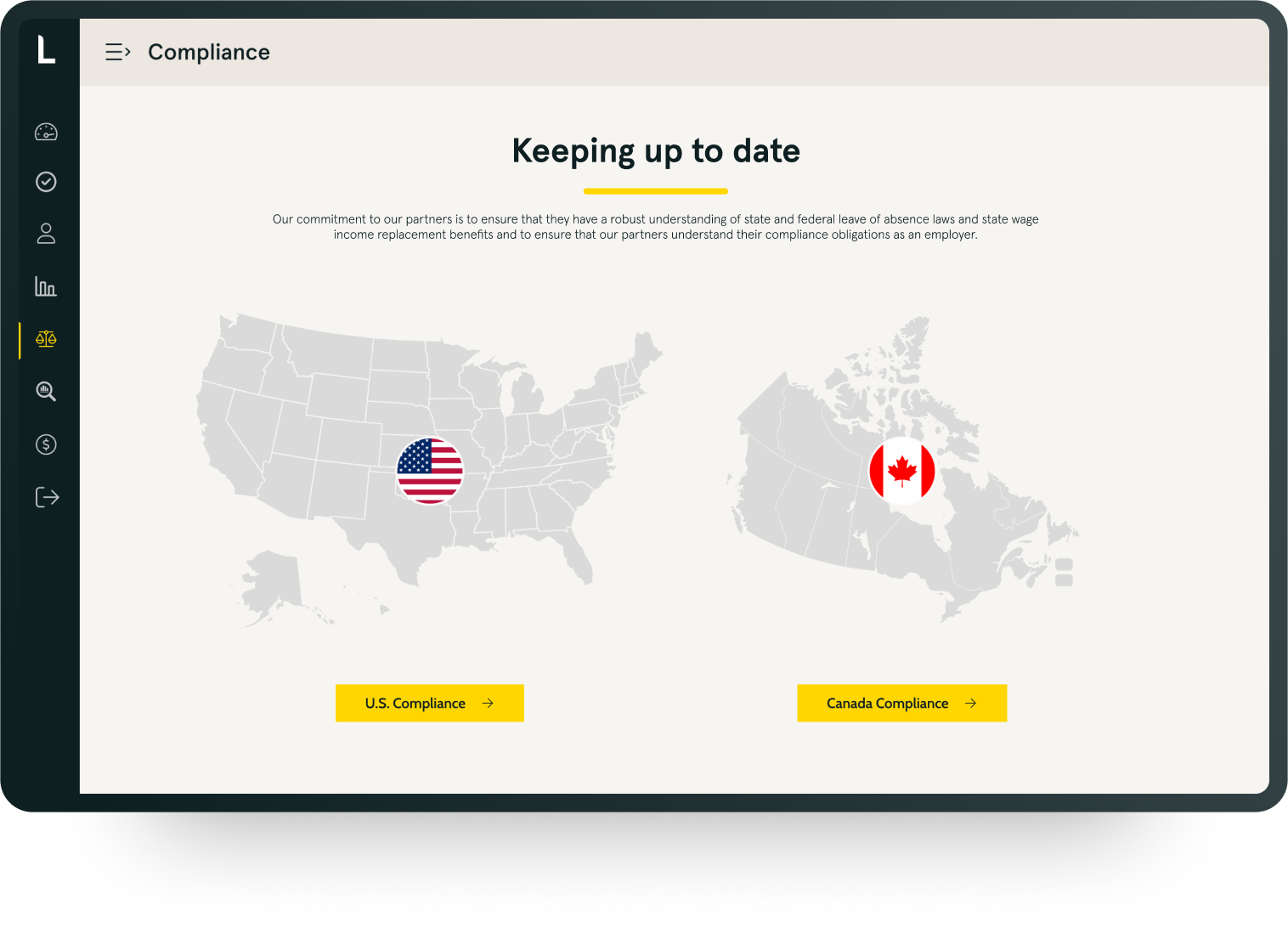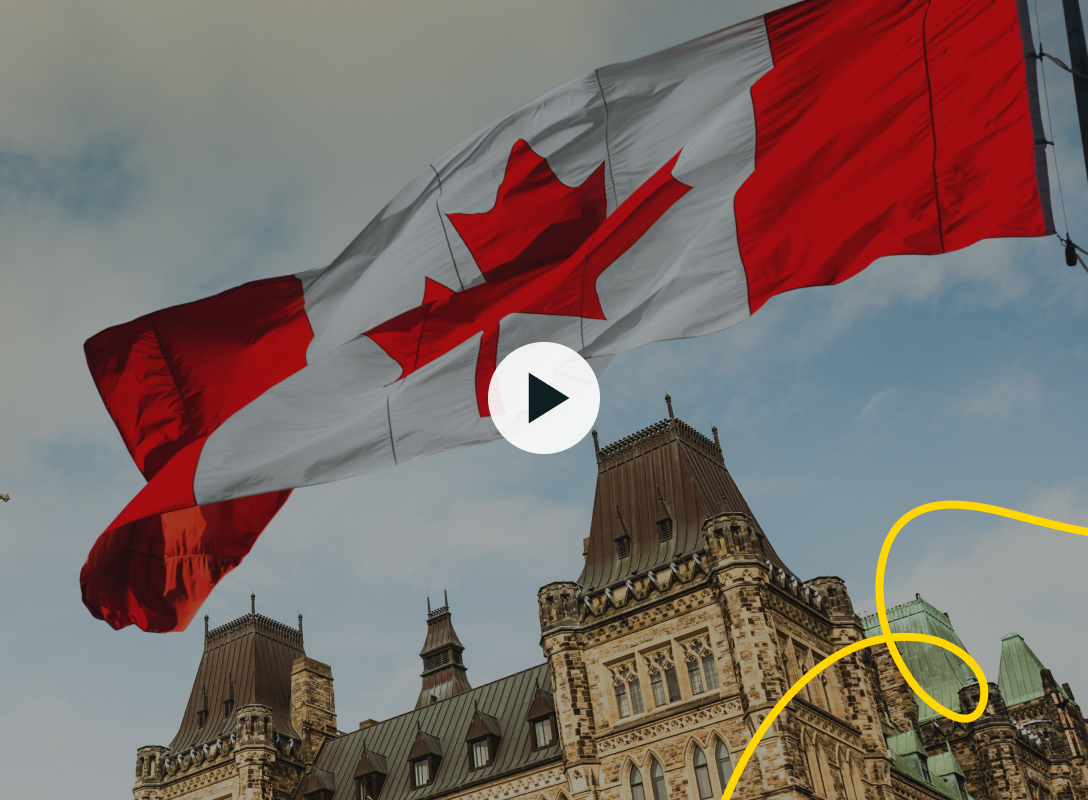NEW RELEASE
The Larkin Compliance Center
Navigating the world of leave laws and state income replacement benefits can be complicated and time-consuming. With Larkin’s Compliance Center, you have a proactive, educational resource at your fingertips–offering the most up-to-date information on family and medical leave laws and income replacement benefits for those on leave in the U.S. and Canada, all conveniently located in one place.
Unlike others who only meet basic compliance, Larkin empowers and informs—simplifying compliance in the complex world of leave law and income replacement benefits to ensure your organization can easily and efficiently stay a step ahead.

Complete and Comprehensive
We’ve got all your compliance needs covered in one easy-to-use, intuitive hub.
Current federal and state leave laws
Upcoming state
leave laws
State income
replacement benefits
All Canadian
leave laws
Beyond Basic Compliance
Streamline your team’s compliance efforts and unlock the insights, tools, and support you need to save time, reduce stress, and more effectively adapt as your business grows.
Transform how you access and utilize information
Our Compliance Center stands out by providing more than just standard information; it’s a source of digestible, actionable insights tailored for your convenience.
Unlike others who only link to state websites, our team expertly simplifies complex legal content, making it easier to understand and use. Given the dynamic nature of compliance, regular updates give you the latest and most relevant information—making it a practical resource in navigating the intricacies of leave law.
Make compliance your strategic advantage
At Larkin, our approach to compliance goes beyond mere adherence to laws and regulations. We provide tools that empower you to be proactive, not just reactive.
Our commitment is to offer a comprehensive service with valuable resources and insights, fostering strategic control over compliance. This method guarantees compliance with federal and state laws to enhance your capabilities in visibility, reporting, and supporting effective business growth and adaptation.
Save time, stress, and resources
Recognizing the complexities of compliance, we’ve streamlined our center into a user-friendly hub, centralizing all essential information. This approach saves time and reduces stress on your team, allowing for quick answers and effective decision-making.
Where others rely on automated compliance, we help you bring a whole new level of ownership, ease, and efficiency to your process—freeing up time and resources to focus on more strategic organizational initiatives.
Get everything you need in one place
Our Compliance Center reliably updates within 1-2 business days, providing the latest compliance information. It offers essential tools like a regularly updated compliance checklist alongside downloadable notices and posters required for your workplace.
Additionally, it features easy-to-understand tables summarizing leave laws, paid time off, and statutory benefits for quick reference, making it quick and easy for you to remain current with the latest regulations.
Support for the U.S. and Canada
Explore the videos below to see how we support compliance in the U.S. and Canada.
U.S. Compliance Center
Discover the ease and efficiency of navigating U.S. leave and income replacement laws with our U.S. Compliance Center video walkthrough and see firsthand how it transforms your compliance management into a proactive, stress-free experience.
This concise guide showcases how Larkin’s Compliance Center simplifies and consolidates complex legal information, ensuring your adherence to the latest family and medical leave regulations.
Canadian Compliance Center
Get acquainted with Larkin’s Canadian Compliance Center through our quick video tour. Designed for clarity and convenience, this centralized hub combines essential Canadian leave law and income replacement guidelines.
The video highlights how the Compliance Center keeps you well-informed and compliant with Canadian leave laws and regulations, making compliance management straightforward and effective.
“Larkin’s Compliance Center has met, or even exceeded our expectations…
I always find what I need in there.”
Larkin Client
Compliance Center Pricing
Change the way you and your team manage compliance with all the insights, tools, and one-to-one support you need consolidated into one annual fee.
Save 10% on the annual price if you sign up by March 1st **
U.S. Compliance Center
U.S. and Canadian
Compliance Center
Canadian Compliance Center
Billed quarterly* | Prorated based on when you sign up | Max discount of $1,000**
© 2024, The Larkin Company

